Premise
Architecture and Expression

Architecture may express human values, feelings and dynamic states. We derive meaning from a building based upon our perceptions of the sensory, formal and technical properties and from our own experiences. When these elements of design are combined, they give expression to a work of art that can be explained using the language of human emotion.
We learn to identify and use the aesthetic elements to give the design an expression. Expressive Elements are those that give a structure the appearance of having a mood, emotional state, character, or dynamic qualities.
Architecture and Identity
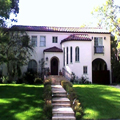
We value using good design in buildings to create the right identity for its owners. Creating a strong identity helps convey a certain lifestyle and provide a visual point of reference to those arriving at a building and those who inhabit it.
A good design conveys an image that, if done correctly, will support and reinforce the intended owner’s identity. The right Architectural style, materials, and overall design will inspire the right emotions, such as confidence, comfort, and a sense of well being.
Architecture and Purpose
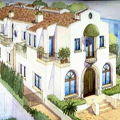
The purpose of architecture is to shelter and enhance man’s life on earth and to fulfill his belief in the nobility of his existence.
Its original purpose was to lessen the risk that nature brought upon humanity, protecting us against the cold, the heat, storms and predators alike.
Over time, architecture became a means of facilitation, representation and communication of cultural identity rather than simply protective devices for humans.
More recently, architecture has entered into the realm of speculation where architecture became about investment and the prospect of making money. Today, investing into the wrong design at the wrong time can turn into a risk for the future.
Architecture and Style

Architectural styles classify architecture in terms of form, techniques, materials, time period, region, etc. It emerges from the study of the evolution and history of architecture. It is a way of classifying architecture that gives emphasis to characteristic features of design, leading to a terminology such as Gothic “style”. Gothic architecture, for example, would include all aspects of the cultural context that went into the design and construction of these structures.
Architectural styles make up an important part of what influences architects when they make their design decisions. The differences in styles are big contributing factors as to how we operate in relation to our clients.
Architecture and Setting
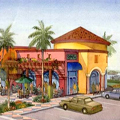
Buildings are a product of their surroundings. Setting can greatly affect the design of a building. All building sites present considerable constraints and challenges. For instance the challenge of contending with the historic significance of buildings in an area will affect the overall design.
We look at all elements that affect a setting, such as size, scale, and local ordinances, and ask ‘how do we deal with that?’ In understanding all the elements that go into a project for a specific setting We can work together with our clients to achieve the best possible design.
Architecture and Space
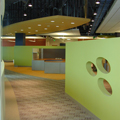
What distinguishes Architecture from all other forms of art is its working with a three-dimensional vocabulary. Architecture is like a great hollowed-out sculpture which humans enter and apprehend by moving about within it.
In designing a building, we submit plans, elevations, and cross-sections; in other words, we represent the architectural volume by breaking it down into the vertical and horizontal planes which enclose and divide it. This has reality only on paper and is justified only by the necessity of measuring the distances between the various elements of the construction for the practical execution of the work. It’s tempting to focus on what you build (walls, floors, windows, doors) but what really drives the experience of architecture… is space.
Spatial experience is dynamic, and relies not on what’s constructed (bricks and mortar) but on what is not constructed. Space Flows, and is primarily experienced “in time”, and this sequencing of connections and boundaries can be described in terms of poetry of movement, rhythm, contraction & expansion, light, scale, material and color.
Architecture and Aesthetic
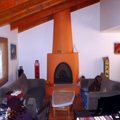
Architecture is considered a visual art like painting and sculpture. Architects design buildings using a creative process by which they manipulate art elements to create a unified and pleasing artistic statement. The difference between a painting and architecture is that a building has a function and must be designed with safety in mind.
When we start working on a project, we prepare quick sketches that suggest areas of function dictated by the client. Next, we use a process of design to draw and refine the form of the new building. Understanding architectural design is simplified if we think of the “façade” or face of a building as a painting. Then we can use design language such as lines, shapes, colors and textures to talk about the image we see.